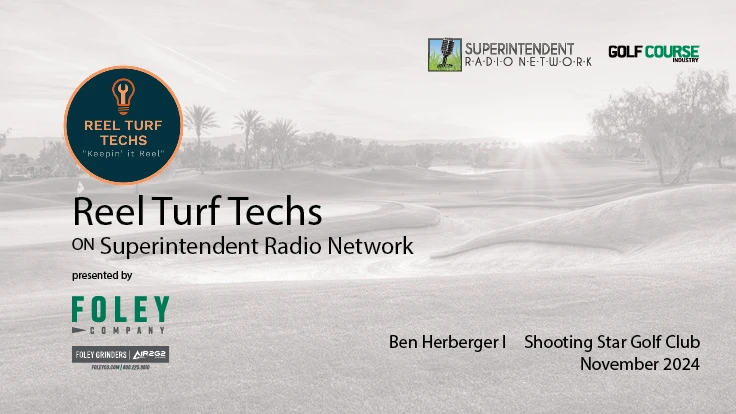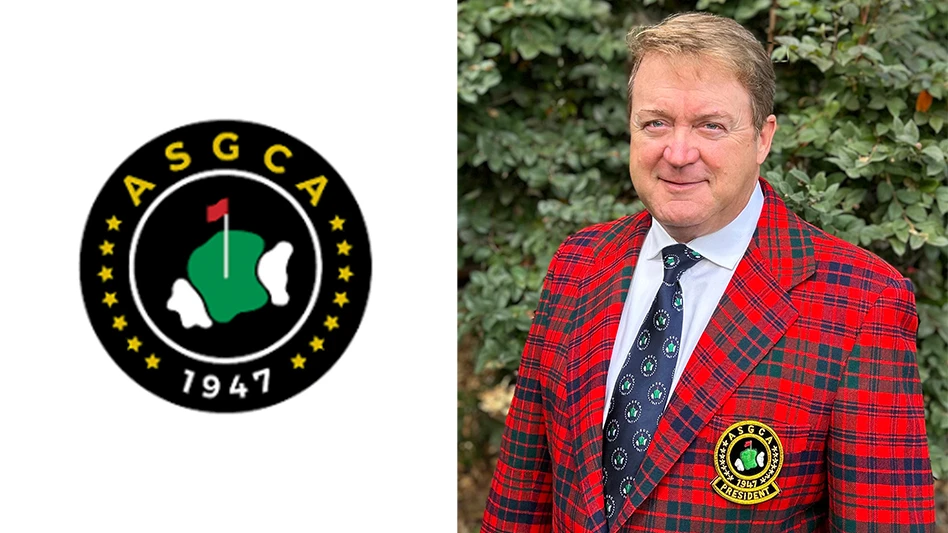I first saw Joe Livingston on the show floor of the 1993 GCSAA Conference in Dallas. I was, at the time, the scholarship and research director for the association, and Joe had won the first-ever Mendenhall Award as the top candidate in the annual scholarship competition. I had been looking forward to meeting this clean-cut, corn-fed youngster from Iowa whose grades and background had impressed the selection committee.
| Rules for success |
By Joe Livingston, CGCS During the past 20 years, my path in turfgrass management has allowed me the great fortune of observing and working with some highly successful, and not so successful, superintendents. I’ve always tried to jot down every quote, practice and management philosophy from myself and others that have worked well or was a noted failure. For a few years, I’ve maintained and revised a written golf course management philosophy that has served as my personal mission statement. There are many people in this business who’ve helped to define my philosophy, and it’s impossible to give credit to everyone involved. Just know many of you in this profession have defined these rules in many ways. So, as I scanned the multiple pages of notes like a scribe looking for a Bible verse, I realized the best way to summarize my philosophy was with a list. Hopefully, the information below can be implemented in another’s philosophy or career. If you don’t have a personal philosophy on golf course management, make one! It represents what you bring to the table. So here goes: |
As I introduced myself to the crop of scholarship winners gathered at the convention center, I noticed one looked a little different from the rest of the best-and-brightest we’d collected that year. He had long hair, a ponytail, an earring, an evil-looking grin on his face and just a hint of a rock ’n ’ roll attitude. The rebel in the bunch was, of course, Joe Livingston.
Flash forward 15 years: the hair is shorter, the earring gone (at least during work hours) but the grin and attitude remain the same.
Livingston is the certified superintendent at Fort Worth’s famed River Crest Country Club and an acknowledged leader in the local and national superintendent community. After graduating from Iowa State in 1995, he served as an assistant at River Crest before an 18-month stint as superintendent at Eldorado Country Club in nearby McKinney, Texas. From there, he moved to the Fazio-designed Stonebriar Country Club in Frisco before finally returning to River Crest as superintendent in 2002. He’s been there since.
Today, the 30-something Livingston isn’t so much a rebel in appearance as in spirit. His strong opinions and willingness to jump in and work have propelled him to the presidency of the North Texas GCSA. And, around the course, he’s more likely to be doling out compliments than cracking the whip.
How’s the golf business in Dallas-Fort Worth right now?
In a word: competitive. The private side is still strong, but members are working more hours during the week. Most golfers are just grinding to keep up. On the public side, you have to provide value for the dollar. Service is key if you’re going to get those corporate outings that haven’t already been cut back. You’re going to sink or swim based on good service and good marketing.
Our business plan at River Crest is pretty simple. We do almost no outside outings, so it’s all about membership recruitment and retention. We’ve kept our membership full and have a waiting list because our members recruit friends. The club is a family. We have a strong junior membership program that feeds our regular membership. Most junior members, by the time they’ve reached 35, have built strong relationships and want to stay here.
How did an Iowa boy end up in the Lone Star State?
I went to Iowa State. Professor Nick Christians is my hero. He was the greatest advisor ever. My dad was a superintendent at Sioux City Country Club for many years. I was looking for an internship in ’93, and Nick suggested I head south. I saw an article about Colonial Country Club in a magazine, so I called information and got a hold of Scott Johnson, CGCS. He said, “Bring your sunscreen, ’cause you’re gonna work and you’re gonna learn.” After the internship, I went down there and took an assistant’s position under Doug Fisher at River Crest. And that was how I ended up here.
You and I first met when you were a GCSAA Scholar way back when. How was that experience?
Dr. Christians pushed all of us to complete the application form for scholarships. I’d always been a straight-A student and had a ton of on-course experience. But I was shocked when I realized I’d gotten the first Mendenhall Award in the nation for the top GCSAA scholar. The convention was in Dallas, and GCSAA flew us in. I had long hair because I was a drummer in a rock band. I was young and wide-eyed, with no idea how big the business was. I remember you took the scholars under your wing and fed us a few drinks, and we smoked a lot of cigarettes. It’s funny I ended back down here in the Dallas area.
You’re still a big ISU guy though.
Everybody feels tight with his school, but Nick is a special guy. ISU is one of the largest turf schools in the nation, yet Nick knows every student. He gets involved in your life. Of course, he’s a great teacher – ISU has won all those turf bowls – and he teaches the fundamentals so well. I just want to thank him because he basically brought me to ISU and told me what it would do for my career. He knew what I needed. I owe him a lot.
What are your biggest challenges?
On a daily basis, I worry about staying hungry. I constantly want to push myself and improve on the experience the staff and I have created. So, that makes me think about the people I’ve surrounded myself with. A gallon of gas costs half their hourly wage. I lie awake thinking they have to feel appreciated or else they’re going to move on. As a manager, 90 percent of what I do is praise and give credit. I walk around most of the day and pat them on the back and say, “Nice job.” You have to give three times more credit than criticism. I have three guys with 35 years of experience and only a handful with fewer than 10 years.
What’s the state of most chapter associations right now?
I’m fortunate to be involved with the North Texas GCSA. I’m president this year. All we talk about is providing value to our membership. We try to mirror the GCSAA, but we face the same challenges it does. Members are always asking, “What have you done for me lately?” There are still many assistants, horticulturists and staff who don’t belong at all. We have great events, but usually it’s always the same 75 guys who participate out of a membership of 400.
Local education is essential. You can’t always work through the national. How can we give back to our members and get more people involved? Everything costs more: printing, Web sites, meetings. We’re lucky to have supportive vendors. To me, without the vendors, we’d be in deep trouble. We’re constantly asking them for more, but they have budgets, too. We try to treat our vendors well in our association, as we should.
What’s the biggest mistake superintendents make these days?
It’s no secret this usually has nothing to do with turf. First, it’s living up to your promises. You have to be who you say you are and do what you say you’ll do. You have to be honest. You can spin agronomic stuff all day long, but it breaks down trust. Would you go back to a doctor who lied to you?
On the agronomic side, it goes back to the basics of what Nick taught us at ISU – you have to have a balanced approach. Mother Nature will throw you curve balls. You have to be patient. Guys try 800 different “fixes,” which makes it impossible to assess what’s working. You need to focus on the basics of plant needs.
If you could teach a class for the GCSAA, what would the topic be?
I’d call it “Commanding respect and enabling those around you” – basically, how to be a model manager around your customers and your people. Don’t get caught up in the small stuff. Give your people the resources to get the job done and give them credit for what they do.
Just a few weeks ago, we had a huge member-guest tournament. A couple of my guys went out of their way to take care of little stuff most people wouldn’t notice. On the final day, the liner fabric in one of the bunkers was loose. It was something the average member would never have noticed. But, when I went by, one of my guys was over in the bunker cleaning it up with a pocket knife and replacing sand by hand. I walked up and told him, “This just gives me a great feeling about who you are and what you do.” I could have driven by, but I stopped and got out to talk to him. That’s my real job.
What do you wish you’d done differently throughout your career?
I chose a great path, but part of me would love to have remained on bentgrass fairways just to see if I could have been as successful in the North. I went to Oakmont last year for the Open, and I was standing there thinking what an amazing job John Zimmers had done. And I thought, “I’d love to know what I could do with all of this.”
Earlier in my career, I’d wish I’d made things simpler. I was driven to set the world on fire – demanding a lot from my staff – and I pushed too hard. It took me a long time to learn patience.
What do you see yourself doing in 15 years?
That’s a difficult question. I hope I’m still driving this course in the morning with a smile on my face. I love tournament golf and tournament prep. I love visiting golf courses and thinking, “How do you get a place to look ready for an Open Championship?” I’d love to be a part of that process and work with the great folks who manage some of those courses and share some of the things I’ve learned.
What advice do you give young people who are interested in the business?
The greatest advice I can give them is to figure out what they want their final destination to be. You have to plot your career to get to that destination. When you move to a part of a country, make sure it’s where you want to live. You get in that local rotation and end up staying put, so pick a place that represents what you want to do. It’s hard to put in words, but choose a place that fits you because it will be a reflection of you.
Final thoughts?
I’m thrilled to be raising a beautiful daughter. I have a real life outside the course, and I’m discovering it’s OK to be a person. It’s OK to leave the job behind and play an instrument and dance with your daughter. It’s a great life and a lot of work, but I’m just a normal guy. My dad had no education. He was just a simple tell it like it is guy, but he taught me that if you work your butt off, someone will notice. That was the best lesson of all. GCI

Explore the July 2008 Issue
Check out more from this issue and find your next story to read.
Latest from Golf Course Industry
- Poipu Bay GC wraps up greenside bunker restoration
- Central Turf & Irrigation Supply Inc. hires new COO
- The Aquatrols Company adds former superintendent to its R&D team
- Heritage Golf Group expands into Tennessee
- Making the grade — at or near grade
- PBI-Gordon receives local business honor
- Florida's Windsor takes environmental step
- GCSAA names Grassroots Ambassador Leadership Award winners





